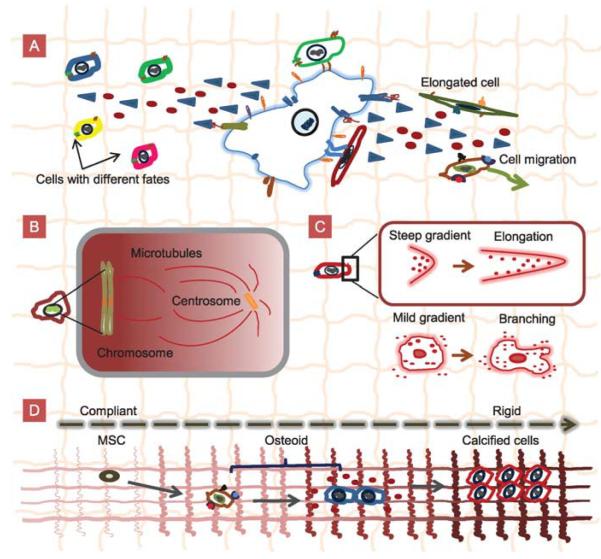Figure 1.
Schematics of cell–cell contacts, cell–ECM interactions, and physicochemical gradients in vivo. A: Cell–cell contact and cell–ECM interactions generate chemical gradients that affect cell behaviours such as cell migration, cell elongation, and cell differentiation. B: Chromosomes generatea Ran-GTP gradient that organises the mitotic spindle during cell division. C: A steep gradient seen by one end of the cell results in elongation whereas a mild gradient seen by the whole cell results in branching. D: Mesenchymal stem cells (MSCs) sequentially differentiate into osteoids and calcified bone cells in response to the graded mechanical signals in the ECM.

